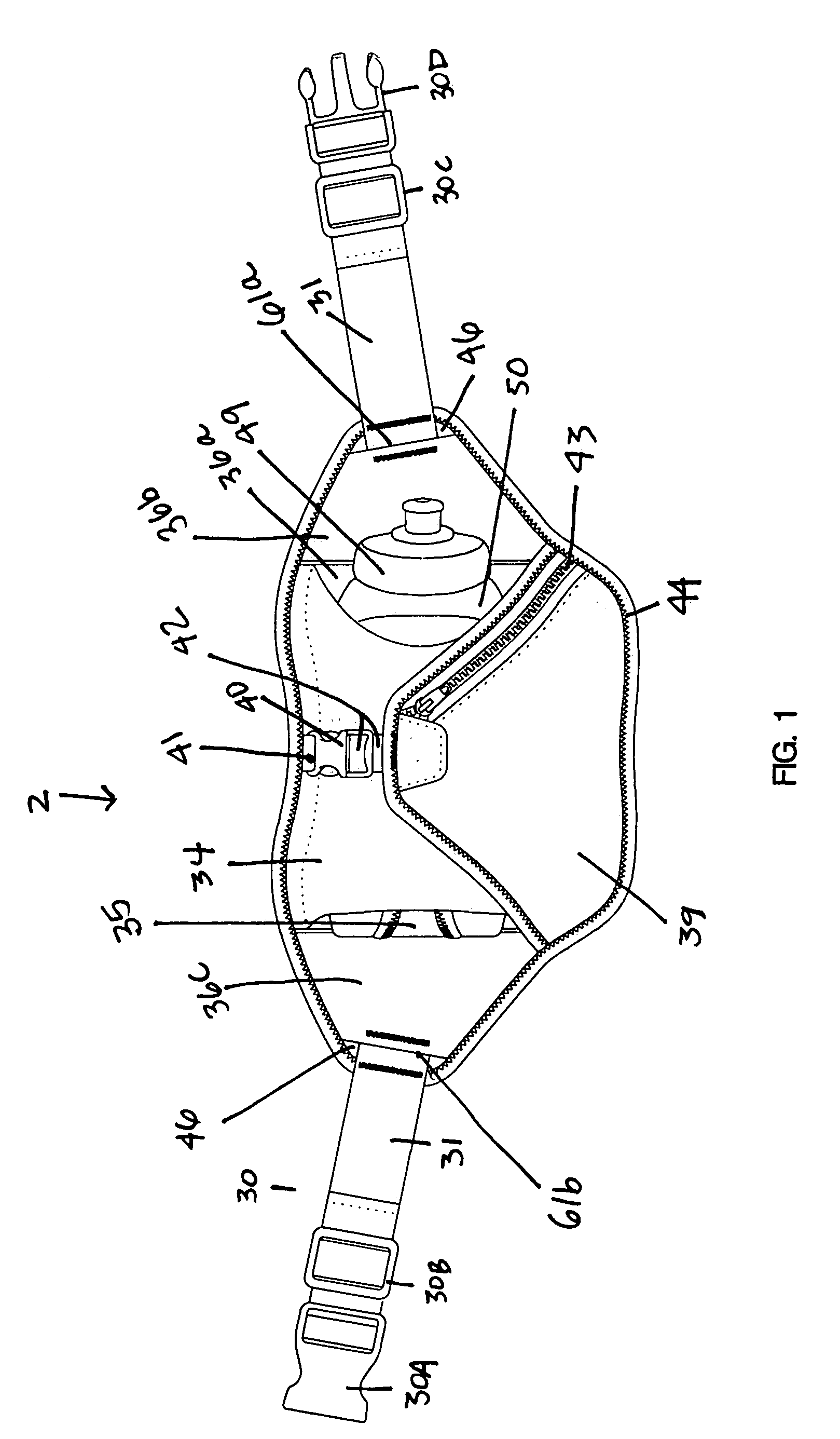Bottle/pack
- Summary
- Abstract
- Description
- Claims
- Application Information
AI Technical Summary
Benefits of technology
Problems solved by technology
Method used
Image
Examples
Embodiment Construction
[0086]The embodiments described herein have been contemplated for purposes of illustrating the principals of the present invention. Accordingly, the present invention is not to be limited solely to the exact configuration and construction as illustrated and set forth herein.
[0087]FIG. 1 shows a front view of a typical preferred embodiment of the present invention. A Bottle / pack (bottle and pack) 2 shown in FIG. 1 consists of two main components—a bottle carrier or pack 4, that is removably attachable to the body of the user shown independently from a front view in FIG. 2, and a bottle portion 6, shown independently from a front view in FIG. 4.
[0088]The two main components of the pack portion of the invention are shown in FIG. 2—first, a main pack portion 4, which includes a bottle or container retaining sleeve 34, and body attaching means waist strap assembly 30 and its parts (waist strap bands 31, mating buckles 30A and 30D, strap adjustment / retaining buckles 30B and 30C) of FIG. 1...
PUM
 Login to View More
Login to View More Abstract
Description
Claims
Application Information
 Login to View More
Login to View More - R&D
- Intellectual Property
- Life Sciences
- Materials
- Tech Scout
- Unparalleled Data Quality
- Higher Quality Content
- 60% Fewer Hallucinations
Browse by: Latest US Patents, China's latest patents, Technical Efficacy Thesaurus, Application Domain, Technology Topic, Popular Technical Reports.
© 2025 PatSnap. All rights reserved.Legal|Privacy policy|Modern Slavery Act Transparency Statement|Sitemap|About US| Contact US: help@patsnap.com



